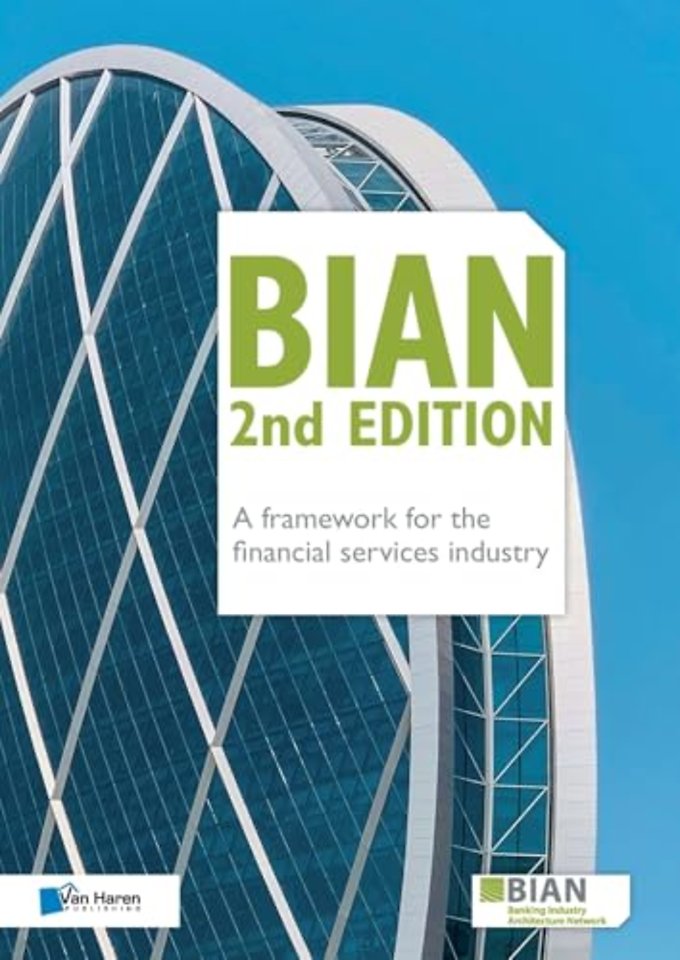BIAN – A framework for the financial services industry
Paperback Engels 2021 2e druk 9789401807685Samenvatting
The Banking Industry Architecture Network (BIAN) is a global, not-for-profit association of banks, solution providers, consultancy companies, integrators and academic partners, with the shared aim of defining a semantic standard for the banking industry covering all banking activity and almost all of the well-known architectural layers.
BIAN's Reference Architecture for the Financial Industry provides its users with a set of building blocks that, when used in different combinations, can support all of the functionality and information a bank needs for both its internal functioning and its collaboration with partners in an Open Finance and Open API economy. BIAN's Reference Architecture for the Financial Industry is freely available on the BIAN website. This website also provides a wealth of information on both the theory and practice of the standard. So why this book? Importantly, it summarizes all of the above information and guides the reader through it on a step-by-step basis. It provides the reader with a thorough understanding of BIAN's architecture and how it can be used to support an organization on its journey to becoming an agile business organization and developing an application platform. BIAN is a semantic standard. It provides business building blocks and defines them in business terms. It provides a business view on both the business and application architectures.
This second edition not only includes the more recent deliverables, it also takes a stepped approach through the different topics. It aims to be more appealing to a business audience by addressing the building blocks of BIAN and their possible use in business terms, whilst also including many real-life examples of BIAN's usage. As such, it should not only appeal to application and business architects, but also to their managers, their business partners and other stakeholders who work closely with them. The first part of the book focuses on the theory: BIAN's organization, the principles and patterns on which its architecture is based, and its building blocks.
The second part of the book explains - in methodology-independent terms - how BIAN can be applied in different architectural layers by different disciplines, in co-operation with architects. This part of the book includes a number of practical examples intended to improve the reader's understanding of the building blocks of the BIAN architecture and encourage them to apply it for the benefit of their own organization. The final part of the book should inspire the reader even further by clearly illustrating the synergy between the content that BIAN delivers and the architecture methodology provided by TOGAF.
Specificaties
Lezersrecensies
Inhoudsopgave
INTRODUCTION BY THE EXECUTIVE DIRECTOR OF BIAN VII
ABOUT THIS SECOND EDITION XI
PART I: INTRODUCING BIAN AND ITS REFERENCE ARCHITECTURE FOR THE FINANCIAL INDUSTRY 1
1 INTRODUCING BIAN, THE ORGANIZATION AND ITS REFERENCE ARCHITECTURE FOR THE FINANCIAL INDUSTRY 3
2 EXPLAINING THE BIAN ARCHITECTURE 29
PART II: APPLYING BIAN 79
3 INTRODUCTION TO PART II, APPLYING BIAN 81
4 WHAT BIAN CAN DO: GENERAL ABILITIES 85
5 BIAN FOR A HOLISTIC ENTERPRISE VIEW 99
6 BIAN FOR THE BUSINESS LAYER 121
7 BIAN FOR THE APPLICATION LAYER 141
8 BIAN FOR INFORMATION AND DATA 171
9 BIAN FOR INTEROPERABILITY 183
PART III: BIAN AND OTHER STANDARDS 199
10 BIAN AND TOGAF 201
11 ALIGNMENT WITH OTHER STANDARD BODIES 213
APPENDICES 215
APPENDIX 1: BIAN ADOPTION JOURNEY 217
APPENDIX 2: TERMINOLOGY AND CONCEPTS 223
APPENDIX 3 FEEDBACK TO THE TEST YOURSELF QUESTIONS 231
APPENDIX 4 LITERATURE AND SOURCES
INDEX
Vergelijkbare boeken
Anderen die dit boek kochten, kochten ook
Rubrieken
- advisering
- algemeen management
- coaching en trainen
- communicatie en media
- economie
- financieel management
- inkoop en logistiek
- internet en social media
- it-management / ict
- juridisch
- leiderschap
- marketing
- mens en maatschappij
- non-profit
- ondernemen
- organisatiekunde
- personal finance
- personeelsmanagement
- persoonlijke effectiviteit
- projectmanagement
- psychologie
- reclame en verkoop
- strategisch management
- verandermanagement
- werk en loopbaan












